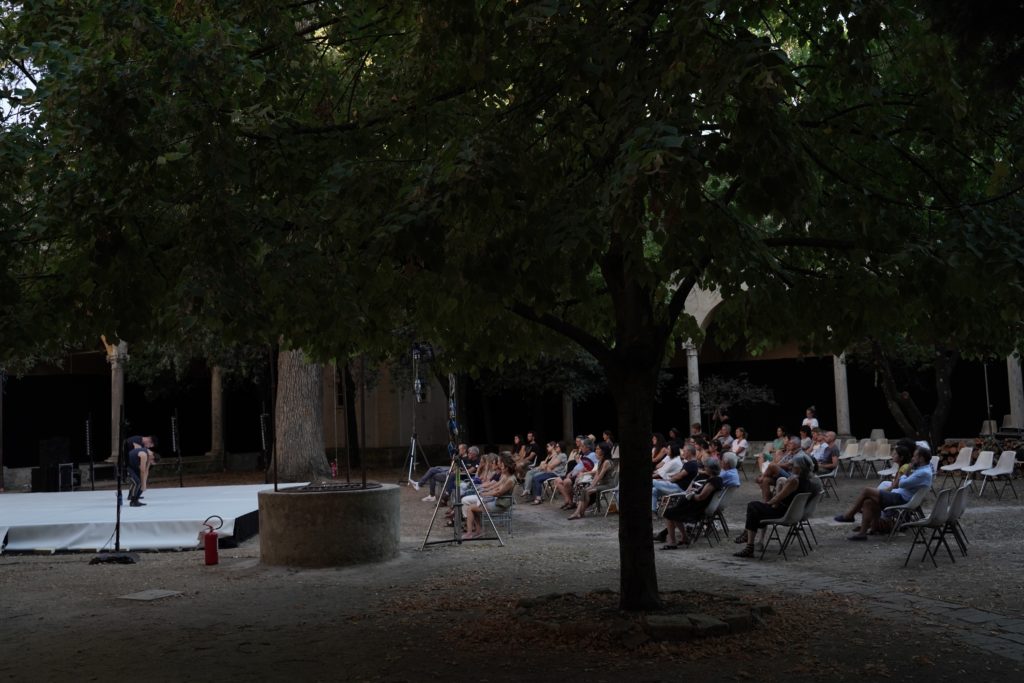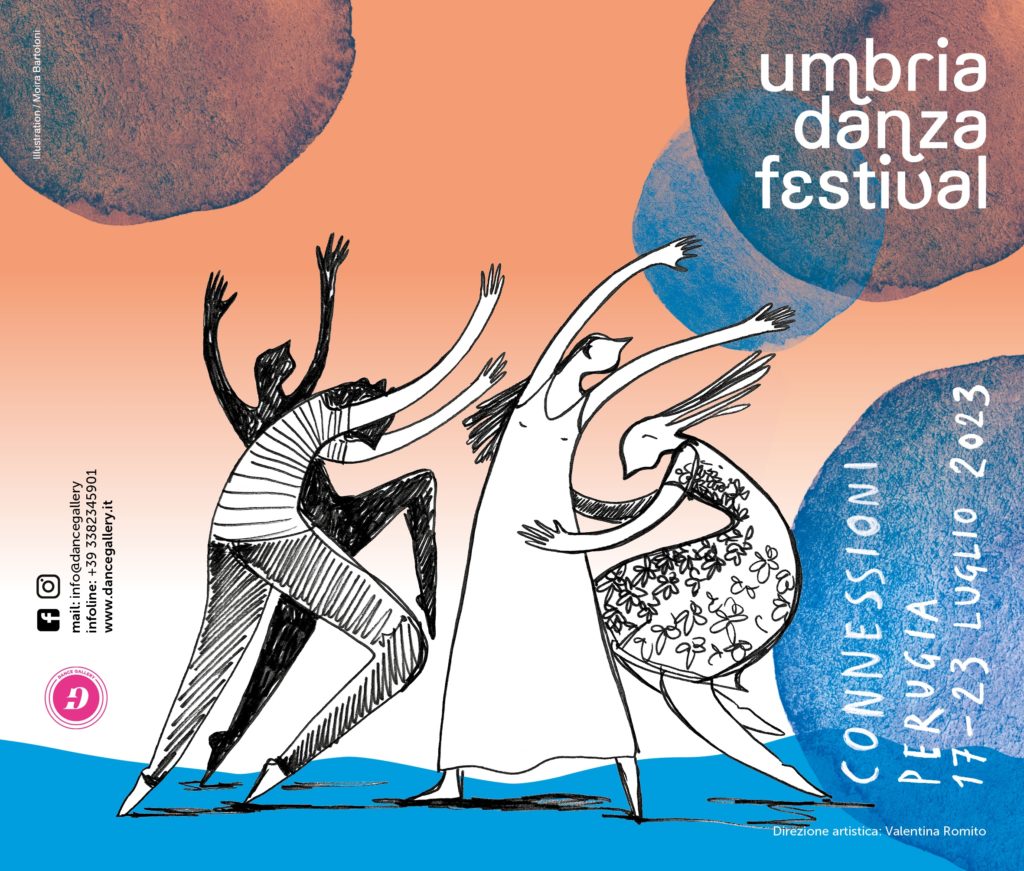Words by Giordana Patumi.
Perugia will be a centre for dance this month when Umbria Dance Festival, running from 17-23 July, comes to town. We sat down with the festival’s artistic director Valentina Romito to discover more.
Q: Hello Valentina, how important are the locations for the festival?
Valentina: The locations are fundamental for the festival. Umbria Dance Festival originated from the Corpi Uscenti showcase, which aimed to bring performances to unconventional spaces and inhabit the Monumental Complex of Sant’Anna in Perugia. This year, the goal is to expand to the neighborhood, involving schools and experiencing the neighborhood on foot. This territorial dimension is important to bring the neighborhood to life through artistic performance. Additionally, this year we are venturing into the historic center with an event in the National Gallery of Umbria featuring one of Adriano Bolognino’s works.

Q: How are the performances chosen and what is this year’s theme?
Valentina: The performances are chosen based on the desire to inhabit the neighbourhood and spaces. We don’t ask for site-specific performances, but we try to find spaces that can accommodate the performances. This year’s theme is “connections,” both in relation to the locations and in terms of creating human connections between artists and the audience. We want the audience to leave the week with a human experience and a connection to the artists and what they have seen. Let’s talk about the invited artists for this year’s edition. We have invited established companies with structured projects, as well as projects that have just finished or are still in development. There are artists like Carolyn Carlson and Marco D’Agostin, who represent a variety of styles that allow the audience to find what they are looking for. The other artists participating in the 2023 edition of UDF include Sara Orselli, Ambra Senatore, Marta Ciappina, Adriano Bolognino, Marigia Maggipinto, Chiara Frigo, IgorxMoreno, Elisabetta and Gennaro Lauro, Nicola Galli, Ilenia Romano, Lorenzo De Simone, Giselda Ranieri, Massimo Monticelli, Laura Gazzani, Federica Loredan, Elia Pangaro, Vidavè Matteo Vignali, Noemi Dalla Vecchia, Françoise Parlanti, Roberto Lori, and Simona Lisi.
Q: Can you tell us about a project that is particularly close to your heart this edition?
Valentina: The project with which we open the festival is a very complex project that immediately fascinated me because it revolves in part around the theme of femininity. It is a project by a choreographer who is not considered emerging, and this is also a deliberate choice. She is a very interesting character because she is very versatile and is also a sign language interpreter, so this work she has been working on for a long time is called “Gocce: rituali di comunità” (Drops: community rituals). It starts from the vision of the archetypal figure of the washerwoman, the woman who, as she herself says, washes the dirt, understood as the unsaid; the things one does not want to touch. It is a project that aims to involve a small community of women who integrate into the performance through work on the body, body music, and voice, together with the choreographer. So, the performance becomes a choral experience. We decided to do it in Pretola (a small village in the province of Perugia near the Tiber River), close to the Tiber.
Before the performance, there will be a brief guided tour by the director of the Tiber Ecomuseum, who will take us through the ancient path that the washerwomen used to reach Perugia, from where they would collect the clothes of the city’s bourgeoisie and then descend to the river to wash them. He will also narrate the ancient trades that were carried out along the river. The whole experience will also be presented in sign language, so it is open to a deaf audience as well. It is a project that excites me because it creates a connection between artists and the audience. Another thing that I care a lot about are the co-productions that Dance Gallery has offered and continues to offer over the years, especially to emerging artists. It is the connection that I always try to make stronger between the project and residencies, and the project and hospitality, in order to present hosted projects or give artists the opportunity to meet the audience, not only in the same year but also after a year.
Q: Will there be the opportunity to attend workshops or masterclasses during the festival?
Valentina: Yes, there will be free workshops and masterclasses with the request or rather invitation to purchase a ticket for the same day, so it is a kind of exchange that allows for a real opportunity to meet the artist you will also see on stage. The idea is really to create a connection. The classes offered are very diverse and heterogeneous.
Q: Are there any other side projects alongside the programming?
Valentina: We have just concluded the first edition of Umbria Dance Festival Kids, dedicated to children and families. We also have an evening of video-dance in partnership with the Cinematica Festival in Ancona and neighbourhood projects such as “Dance among the trees” and “CALL ME Audioguide to Disappear.” These projects are free and offered as a gift to the city and the people living in the neighbourhood.
Q: What would you like people to take away from the festival?
Valentina: I would like people to come to the festival with curiosity and a desire to have an intense experience. I want each person’s body to be nourished with physical sensations that they can take home. The idea of connection and vibrating with dance is very important to us, and it is our wish for everyone who comes to visit the festival this year.

